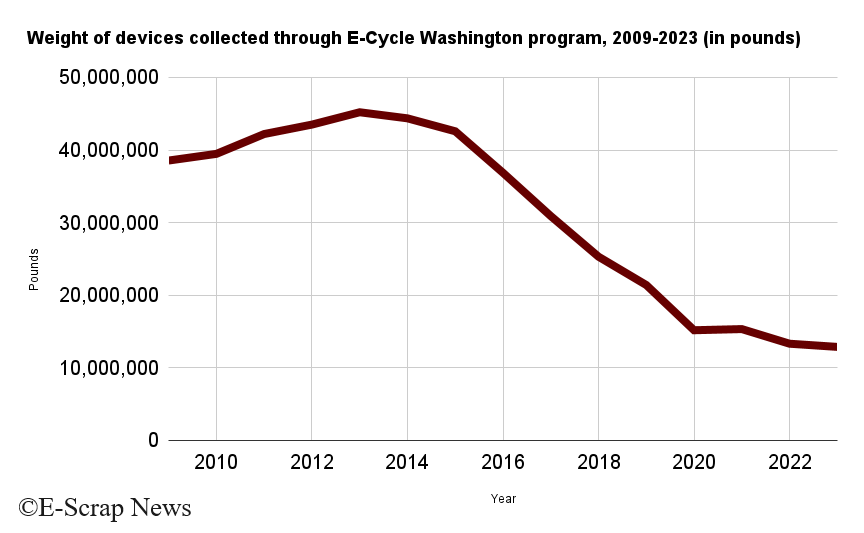
E-Cycle Washington handled 12.9 million pounds of electronics in 2023, down about 3% from the previous year. | Aquatarkus/Shutterstock
The weight of devices collected in Washington state’s e-scrap program dropped again in 2023, reaching a new low in the program’s 15th year as the portion of lighter-weight devices in the stream continues to grow.
Collectors participating in the state’s extended producer responsibility (EPR) program, known as E-Cycle Washington, handled 12.9 million pounds of electronics in 2023. That’s down about 3% from 2022, when they handled 13.3 million pounds.
But it’s a far cry from the 13% drop the program saw from 2021 to 2022, when collectors handled 2 million fewer pounds of devices.
The year-end data comes from the Washington Materials Management & Financing Authority (WMMFA), the stewardship group that manages the e-scrap program on behalf of manufacturers that are required to fund collection of covered devices.
In its December 2023 report, the group noted televisions made up 74.9% of the material stream in 2023, while monitors contributed 14.3% and computers 10.8%.
The program launched in 2009, collecting 39 million pounds of electronics that year. It grew each year and peaked in 2013, when 45 million pounds were collected for recycling. Since then, the weight collected has decreased each year except for 2021, when it rebounded following a 2020 dropoff.
The decrease is driven by the ongoing changes in the device stream, particularly the move to lighter-weight devices and away from bulkier, heavy devices like cathode ray tube (CRT) displays.


